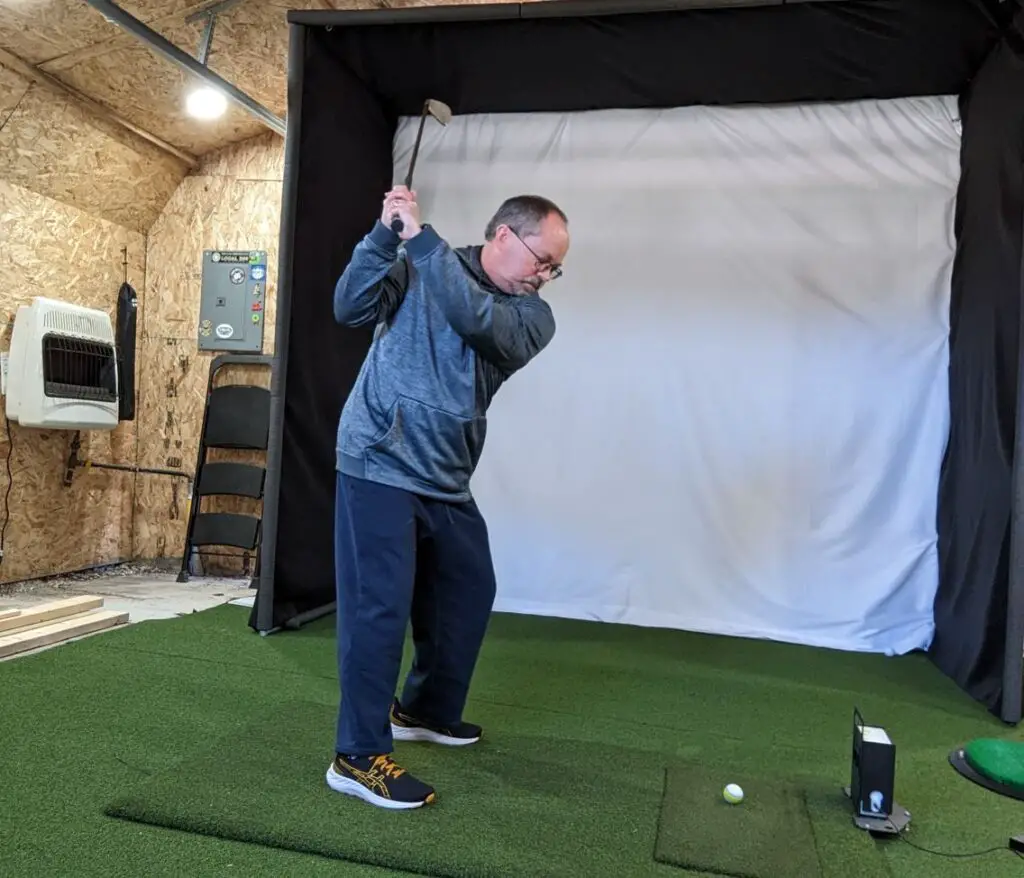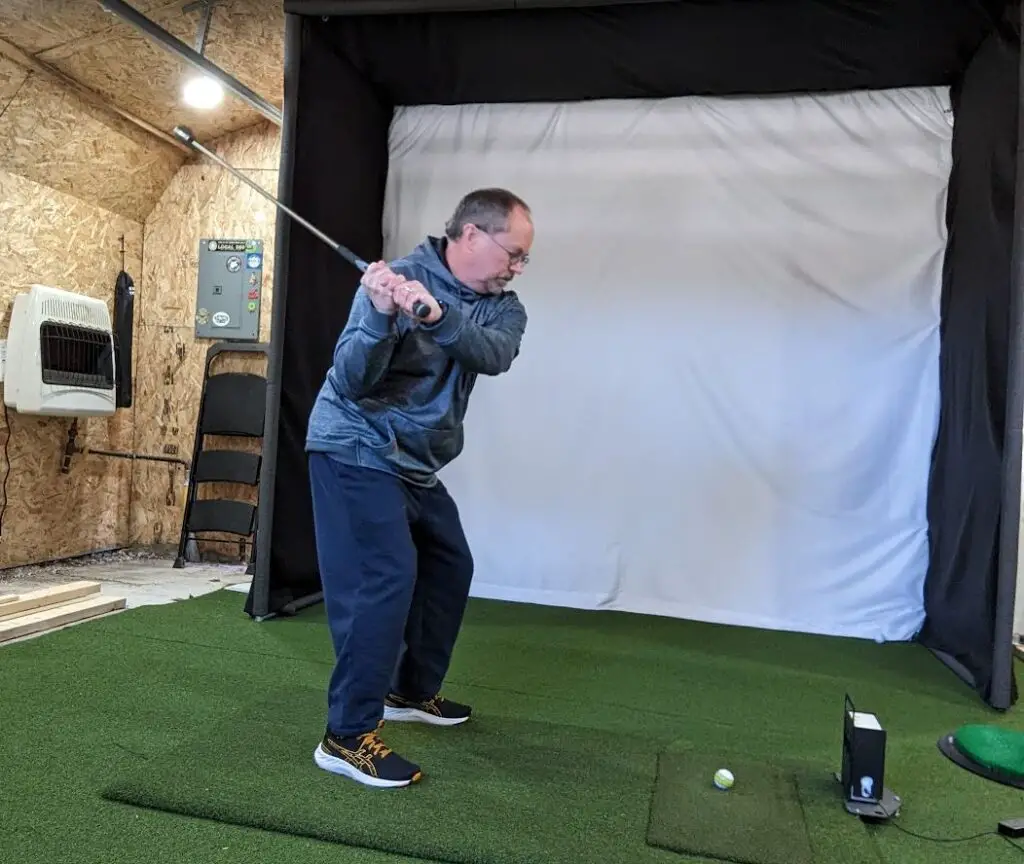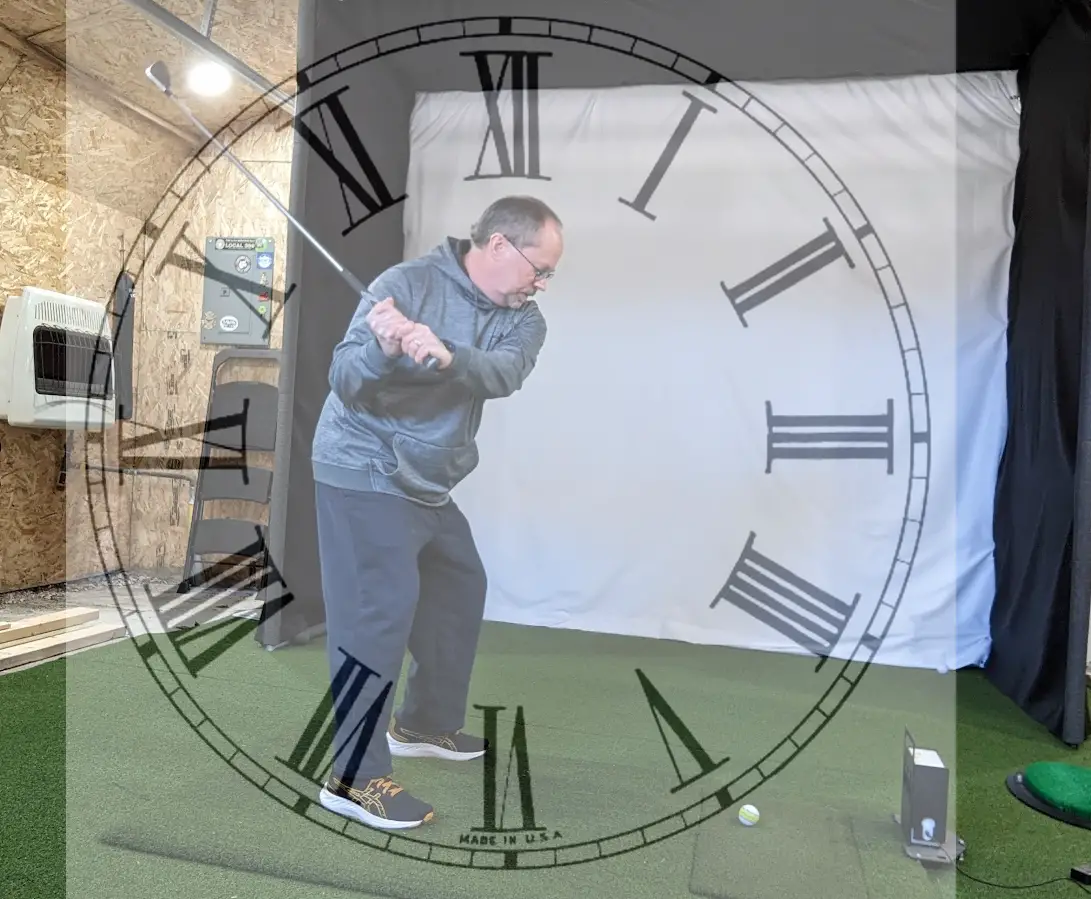Ever felt like something just doesn’t feel right in your golf swing? Master your swing or it will master you. One of the key components of a good golf swing is ability to learn how to shallow the club in the downswing. Get the golf shaft on the correct plane and you will see increased accuracy and consistency in your golf game.
Shallowing the club is a term used to describe the process of having a shallower angle with the golf club as compared to the backswing. Basically if you think about it, your backswing may have the shaft of your golf club going through an invisible clock at 11 on the clock face, while the club traces through 10 o’clock as it goes through the downswing. Hope that makes sense.
There are a few different techniques to shallow the club and it is best to look at each and figure out what may work best for you. Some golfers believe that the best way to shallow the club is to get your trail arm to externally rotate on the backswing. Others believe that relaxing the right arm and pulling it away from the body on the backswing is the key to success. Perhaps having the palm of your lead hand point to the ground will work best for you. While these techniques may seem similar or darn right the same, sometimes it is just having the swing thought that fits your swing/body where everything clicks like it should.
Understanding The Need To Shallow The Golf Club
Most golfers nowadays are looking to improve their swing, hit the ball farther, make better contact with the ball along with creating more speed and power. That is a lot to ask for. The goal of swallowing the golf club is to create a more efficient swing, which is repeatable and maximizes distance and accuracy.
You may have heard that in order to shallow the golf club, it requires the golfer to externally rotate their trail arm on the backswing. While this can be a helpful tip for some golfers, it is not an absolute necessity. Instead, one tip to club shallowing is to start the downswing with a lateral hip shift. This single move helps the golfer to drop the club into the slot and create a shallower angle of attack.
Another important aspect of club shallowing is maintaining a consistent spine angle throughout the swing. This helps the golfer to stay on plane and avoid coming over the top. Too many golfers sway away from the ball during the backswing so never get the necessary lateral move in the downswing.
Shallow Golf Club Drill
There are several drills and exercises that golfers can use to improve their club shallowing technique. I like the “pump drill,” which involves making a few practice swings with a pump motion to help ingrain the feeling of a shallower downswing. If you are able to incorporate a mirror and literally see the swallowing of the golf club/shaft, all the better.
Factors Affecting Club Shallowing
Swing Plane
The swing plane is the path that the clubhead follows as it moves through the swing. The angle of the swing plane can have a significant impact on how effectively the club is shallow. We’ve all seen Jim Furyk or Sergio Garcia swing a golf club. Polar opposites.
Take a look at Jim Furyk here. Where does his club shaft go through on the invisible clock? On the backswing I would say he is at about 12. But then look at the swallowing of the golf club in the downswing.
A flatter swing plane, where the clubhead moves around the body in a more horizontal plane, can make it easier to start with a shallow swing but typically what happens is the downswing actually gets steeper.
Hand Position
The position of your hands can also affect your ability to shallow the club. If your hands are too far behind the ball at impact, it can cause the club to come in at a steeper angle, making it more difficult to shallow. Conversely, if your hands are too far ahead of the ball at impact, it can cause the club to come in too shallow, leading to a loss of power and accuracy. Finding the right hand position at impact is crucial to achieving an effective shallow angle.
Weight Distribution
You may not realize this but the distribution of your weight of your feet can impact the ability to shallow the club. Weight too far back and the club may come in at a steep angle. This is a definite no-no for those of us looking to shallow the golf club. Conversely, if your weight is too far forward, it may cause the club to come in too shallow. While that may be an initial goal, you will lose power with the weight too far forward. Above all, we don’t want to sway in the swing. Finding the right weight distribution is crucial to achieving an effective shallow angle.
Techniques for Shallowing The Golf Club
The Right Grip
One of the keys to shallow the golf club is to have the right grip. The grip should be neutral, not too strong or too weak. A neutral grip allows for natural wrist movement, which is essential for club shallowing. A strong grip can cause the clubface to close too early, leading to a steep downswing, while a weak grip may do just the opposite.
I know I need to constantly remind myself of this. When holding the golf club, make sure the grip is in the fingers, not the palm of your hand.
Proper Wrist Action
Another important factor in club shallowing is proper wrist action. On the backswing, the wrists should hinge upwards, creating a 90-degree angle between the clubshaft and your left arm (for right-handed golfers). This wrist hinge sets the club on a steep plane, which can be shallowed on the downswing.
As you start the downswing, the wrists should begin to unhinge, or bow, towards the target. This motion shallows the club and promotes a shallow angle of attack, resulting in a more powerful and accurate shot. I like to think of my lead arm palm facing towards the ground. Do not start the downswing with your body rotating. Rather move your hips towards the target and pull your hands down, with palm of lead hand facing the ground and then rotate.
View this post on Instagram
Hips Move Towards Target
During the downswing, the initial movement should be the hips bumping towards the target. Then rotate. This helps the club to drop into the slot and shallow out. This motion also helps to generate power and speed through impact.
A golfer who is an expert on this subject is Tom Saguto over at SagutoGolf. Let’s watch him here.
Drills for Club Shallowing
Bucket Drill
The bucket drill is another great way to work on your club shallowing. It helps you feel the proper swing path and encourages you to swing from the inside. Here’s how to do it:
- Place a bucket or a small object on the ground in front of you.
- Take your normal golf setup position, but move the ball back in your stance.
- Take a backswing and then focus on swinging the clubhead down into the bucket. The goal is to swing from the inside and hit the bucket with the clubhead.
- Repeat this drill several times, focusing on swinging from the inside and hitting the bucket with the clubhead.
Clock Drill
Lets record your golf swing. We will do this drill in slow motion. Here’s how I do it:
- Put your cell phone about 8 feet behind would would be the ball path. Wrist height is a good place to put your cell phone. Hit record.
- Take your normal golf setup position. Again, we are doing the Clock drill in slow motion.
- Take a backswing and have the shaft go through what would be 11 on the clock.
- While moving in slow motion, bump the hip and point the palm of your lead hand towards the ground. This should shallow the golf club and now swing through or hit a golf ball
- Repeat multiple times. Watch the video to make sure you are in fact swallowing the golf club.
The thing to remember about golf and practicing a movement is there is feel and there is real. I practiced the clock drill over and over without using a video camera and was of the belief I was doing a great job swallowing the golf club. However, when I saw video of my swing, that was not the case. Very little if any swallowing. Still, it beat the steep swing I used to have. The moral of that story is sometimes it is best to overexaggerate a move. Feels are not real or something to that effect. If you watch the pro’s, you can definitely see that in their practice swings.


Common Mistakes to Avoid
When trying to shallow the golf club, there are some mistakes that seem to happen more than others. These mistakes can hinder your progress and prevent you from achieving your end goal. Did I mention how long it might take to learn a new golf swing? Here are some of the mistakes to avoid:
- Trying to shallow too early: One of the biggest mistakes golfers make is trying to shallow the club too early in the downswing. This can lead to a steep angle of attack and poor ball contact. It’s important to let the club naturally shallow as you transition from the top of the swing.
- Not using the lower body: Another mistake is relying solely on the arms and hands to shallow the club. This can lead to an inconsistent swing and lack of power. Make sure to engage your lower body and use your hips to initiate the downswing.
- Overcompensating: Some golfers may overcompensate when trying to shallow the club, leading to an overly flat swing. This can result in poor ball flight and a loss of distance. In fact a shallow backswing usually leads to a steeper downswing.
- Not enough practice: Shallowing the club is a complex movement that takes time and practice to master. Get your 20 hours of practice in to learn a new golf swing. Make sure to practice regularly, watch YouTube videos for inspiration or seek a qualified golf instructor.
By avoiding these common mistakes, you can improve your chances of successfully shallow the golf club and achieving a more consistent and powerful swing.
This Is How We Shallow The Golf Club In The Downswing
I think we can all agree that swallowing the golf club can improve your game by increasing accuracy, consistency, and allowing for more power. You can shallow the club by bumping your hips towards to target, relaxing your right arm on the backswing, allowing your lead wrist to flex with the palm facing the ground and your trail wrist to extend on the downswing. Your back should remain to the target as long as possible while your arms drop. Then quickly rotate through the ball. You should also focus on maintaining proper posture and spine angle throughout the swing. And don’t forget to keep your right elbow in (for right handed golfers) during the downsing.
Now if that doesn’t sound like 100 different swing thoughts going through your head at once, remember that thoughtful practice pays off. In a nutshell, do the clock drill. Watch yourself in a mirror and record your golf swing. Shallow the club in slow motion until you can build up speed.
Remember that every golfer is different, and what works for one person may not work for another. It is important to experiment with different techniques and find what works best for your individual swing. By incorporating the tips and strategies outlined in this article, you can improve your ability to shallow the club and take your golf game to the next level.

